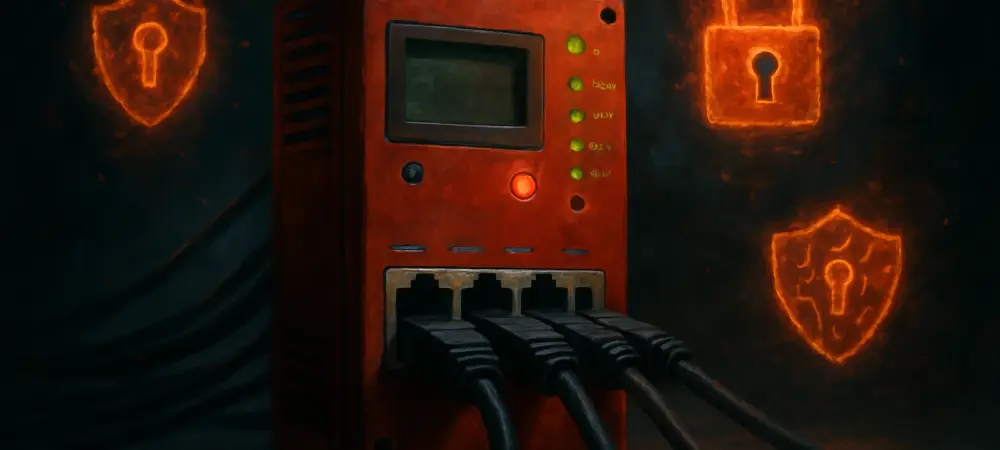Imagine a critical energy grid or water treatment facility grinding to a halt due to a cyberattack that exploits a tiny flaw in a widely used control device, a scenario that is not far-fetched given the recent discovery of severe vulnerabilities in Red Lion Sixnet remote terminal units (RTUs), which are essential components in industrial automation. These devices, pivotal in sectors like energy, water treatment, and manufacturing, have been found to harbor flaws that could grant attackers full control over critical infrastructure. This technology review delves into the specifics of these cybersecurity risks, evaluates the performance and security of affected RTUs, and assesses the implications for industrial systems.
Overview of Red Lion Sixnet RTUs
Red Lion Sixnet RTUs, particularly the SixTRAK and VersaTRAK series, serve as the backbone of industrial control systems across various essential industries. These devices facilitate automation and data acquisition, ensuring seamless communication and operational efficiency in environments where downtime can have catastrophic consequences. Their role in monitoring and controlling processes makes them indispensable, yet it also positions them as prime targets for cyber threats.
The importance of robust cybersecurity for such technology cannot be overstated. As industrial systems increasingly integrate with digital networks, the attack surface expands, leaving RTUs vulnerable to exploitation. A breach in these devices could disrupt operations, compromise safety, and lead to significant financial losses, highlighting the urgent need for secure design and maintenance.
Technical Analysis of Security Flaws
Authentication Bypass Vulnerability (CVE-2023-42770)
A critical flaw identified as CVE-2023-42770 exposes a dangerous authentication bypass in Red Lion RTUs. The software listens on port 1594 for both UDP and TCP connections, but while UDP requires authentication, TCP does not. This oversight allows unauthorized users to send commands without any verification, effectively opening a backdoor to the system.
Exploiting this vulnerability is alarmingly straightforward for a determined attacker. By establishing a TCP connection, malicious actors can bypass security protocols and interact directly with the device. This flaw, rated at a severity of 10.0 on the CVSS scale, underscores a fundamental lapse in access control that could have devastating effects if leveraged in a targeted attack.
Remote Code Execution Risk (CVE-2023-40151)
Compounding the threat is CVE-2023-40151, a remote code execution vulnerability within the Sixnet Universal Driver (UDR). This flaw permits attackers to execute arbitrary Linux shell commands with root privileges, granting them the highest level of access to the system. Such capability could enable the manipulation of critical processes or the installation of malicious software.
The real danger emerges when this vulnerability is chained with the authentication bypass flaw. Together, they create a pathway for attackers to gain unrestricted control over affected RTUs, executing commands that could disrupt operations or cause physical damage. Also rated at 10.0 on the CVSS scale, this issue amplifies the urgency for immediate remediation.
Impact on Industrial Infrastructure
The scope of these vulnerabilities extends across a broad range of Red Lion RTU models and firmware versions, affecting devices integral to critical infrastructure. Their widespread deployment in sectors responsible for essential services means that an exploit could lead to widespread process disruptions, undermining operational reliability. The potential for cascading failures in interconnected systems adds another layer of concern.
Beyond operational hiccups, the risks include tangible threats to safety. In scenarios where RTUs control physical machinery, unauthorized commands could result in equipment malfunction or hazardous conditions for workers. This possibility emphasizes the high stakes involved in securing these devices against cyber intrusions.
Challenges in Securing Industrial Systems
Addressing vulnerabilities in industrial control systems presents unique hurdles. Applying patches in live environments often risks interrupting operations, creating a dilemma between security and continuity. Many organizations hesitate to implement updates due to the potential for downtime, leaving systems exposed for extended periods.
Additionally, the stealthy nature of cyber exploitation poses a detection challenge. Attackers could infiltrate systems without immediate signs of compromise, using their access to gather intelligence or prepare for a larger assault. This delayed visibility complicates efforts to respond effectively to threats.
Red Lion, in collaboration with cybersecurity researchers and government agencies like CISA, has outlined mitigation strategies. These include deploying released patches, enabling user authentication, and restricting TCP access to vulnerable ports. While these steps are critical, their implementation requires careful planning to avoid unintended disruptions in operational settings.
Performance Under Threat
Evaluating the performance of Red Lion RTUs under the shadow of these vulnerabilities reveals a mixed picture. On one hand, these units are engineered for reliability and efficiency in demanding industrial applications, delivering consistent results under normal conditions. Their design supports robust data handling and integration, which are vital for automation tasks.
On the other hand, the presence of critical security flaws severely undermines their dependability in a networked environment. The ease of exploitation through authentication bypass and remote code execution flaws suggests that without remediation, their performance could be fatally compromised by malicious interference. This duality highlights the necessity of balancing functionality with fortified security measures.
Verdict on Red Lion RTU Security
Looking back, the review of Red Lion Sixnet RTUs revealed a technology with strong operational capabilities marred by severe cybersecurity vulnerabilities. The authentication bypass and remote code execution flaws posed significant risks, potentially allowing attackers to seize control over critical systems with catastrophic outcomes. The severity of these issues, underscored by their maximum CVSS ratings, demanded urgent attention from affected organizations.
Moving forward, the path to resilience involves actionable steps such as promptly applying patches and enforcing strict access controls. Collaboration between vendors, cybersecurity experts, and industry stakeholders emerges as essential to developing more secure protocols and preventing similar vulnerabilities. This incident serves as a stark reminder of the evolving nature of cyber threats, urging a proactive stance in safeguarding industrial automation for the long term.

